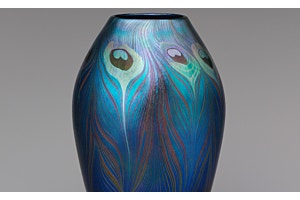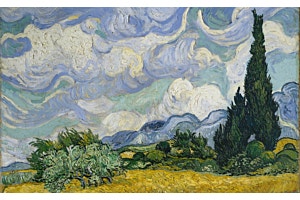
Savor a season of spectacular art with The Met’s current program of exhibitions and accompanying catalogues, now available to shop at The Met Store.
Tree & Serpent: Early Buddhist Art in India
By John Guy, Florence and Herbert Irving Curator of the Arts of South and Southeast Asia in the Department of Asian Art at The Metropolitan Museum of Art, New York.


Named for two primary motifs in Buddhist art, the sacred bodhi tree and the protective snake, Tree & Serpent: Early Buddhist Art in India is the first publication to foreground devotional works produced in the Deccan region from 200 B.C.E.–400 C.E. Unlike traditional narratives, which focus on northern India (where the Buddha was born, taught, and died), this book presents Buddhist art from monastic sites in the south.


It accompanies The Met’s exhibition of the same name, which explores a series of evocative and interlocking themes to reveal both the pre-Buddhist origins of figurative sculpture in India and the early narrative traditions that were central to this formative moment in early Indian art. Featuring more than 125 objects in various media—including limestone sculptures, gold, silver, bronze, rock crystal, and ivory—Tree & Serpent transports visitors into the world of early Buddhist imagery that gave expression to this new religion as it grew from a core set of ethical teachings into one of the world’s great religions.
Cecily Brown: Death and the Maid
By Ian Alteveer, Aaron I. Fleischman Curator in the Department of Modern and Contemporary Art, with a contribution by Adam Eaker, associate curator in the Department of European Paintings, both at The Metropolitan Museum of Art, New York.


Cecily Brown (British, b. 1969) transfixes viewers with sumptuous color, bravura brushwork, and complex narratives that relate to some of European painting's grandest and most time-honored themes, including still-life motifs and meditations on mortality through vanitas. Cecily Brown: Death and the Maid features 21 paintings and 26 works on paper—drawings, watercolors, sketchbooks, and monotypes—that span the three decades of Brown’s career to date, including recently completed and never-before-published works. A conversation with the artist provides insight into her process and sources, while an insightful essay situates Brown in the lineage of the great artists of the last 500 years.


The Met's concurrent exhibition likewise reexamines the work of an artist whose influential output references both modern heavyweights, such as Willem de Kooning, Philip Guston, and Joan Mitchell, and Old Masters like Goya, Hogarth, Manet, and Rubens. The first full-fledged museum survey of Brown’s work in New York since she made the city her home, Cecily Brown: Death and the Maid assembles a select group of some 50 works of art that have propelled her dynamic and impactful practice for decades.
Art for the Millions: American Culture and Politics in the 1930s
By Allison Rudnick, associate curator in the Department of Drawings and Prints at The Metropolitan Museum of Art, New York, with contributions by Kirsten Pai Buick, Max Fraser, and Rachel Mustalish.


American art in the 1930s—intertwined with the political, social, and economic tumult of an era not so unlike our own—engaged with the public amid global upheaval. Art for the Millions: American Culture and Politics in the 1930s examines the search for artistic identity in the US from the stock market crash of 1929 that began the Great Depression to the closure of the Works Progress Administration in 1943. During this time of civil, economic, and social unrest, artists transmitted political ideas and propaganda through a wide range of media, including paintings and sculptures, but also journals, prints, textiles, postcards, and other objects that would have been widely collected, experienced, or encountered.


This publication is presented alongside The Met’s exhibition featuring more than 100 works from the Museum’s collection and several lenders. Highlights include paintings by Georgia O’Keeffe, Charles Sheeler, and Stuart Davis; prints by Elizabeth Olds, Dox Thrash, and Riva Helfond; photographs by Walker Evans and Dorothea Lange; footage of Martha Graham’s dance Frontier; and more, providing an unprecedented overview of the era’s sociopolitical landscape.
Manet/Degas
By Stephan Wolohojian, John Pope-Hennessy Curator in Charge in the Department of European Paintings, and Ashley Dunn, associate curator in the Department of Drawings and Prints, both at The Metropolitan Museum of Art, New York, with contributions by Stéphane Guégan, Denise Murrell, Haley S. Pierce, Isolde Pludermacher, and Samuel Rodary.


Friends, rivals, and, at times, antagonists, Édouard Manet (French, 1832–1883) and Edgar Degas (French, 1834–1917) maintained a pictorial dialogue throughout their lives as they both worked to define the painting of modern urban life. Manet/Degas, the first book to consider their careers in parallel, investigates how their objectives overlapped, diverged, and shaped each other's artistic choices.


This lavishly illustrated, in-depth study offers an opportunity to reevaluate some of the most canonical French artworks of the 19th century, including Manet's Olympia, Degas's The Absinthe Drinker, and other masterworks in The Met's exhibition also titled Manet/Degas.
Vertigo of Color: Matisse, Derain, and the Origins of Fauvism
By Dita Amory, Robert Lehman Curator in Charge of the Lehman Collection at The Metropolitan Museum of Art, New York, and Ann Dumas, consultant curator of European Art at the Museum of Fine Arts, Houston, with contributions by Isabelle Duvernois and Isabelle Monod-Fontaine.


During the summer of 1905, Henri Matisse (French, 1869–1954) and André Derain (French, 1880–1954) went on holiday in Collioure, a modest French fishing village 15 miles from the Spanish border. This groundbreaking book examines how two artists, entranced by the shifting light and stunning imagery of the eastern Mediterranean, laid the groundwork for the movement known as Fauvism (from the French fauve, or "wild beast").


This richly illustrated catalogue accompanies an exhibition co-organized by The Metropolitan Museum of Art and the Museum of Fine Arts, Houston. Vertigo of Color: Matisse, Derain, and the Origins of Fauvism emphasizes as never before the legacy of that summer, and examines the paintings, drawings, and watercolors of Matisse and Derain through 65 works on loan from national and international museums as well as private collections.
Shop exhibition catalogues, Met publications, coffee table books, and more in-store and online.






